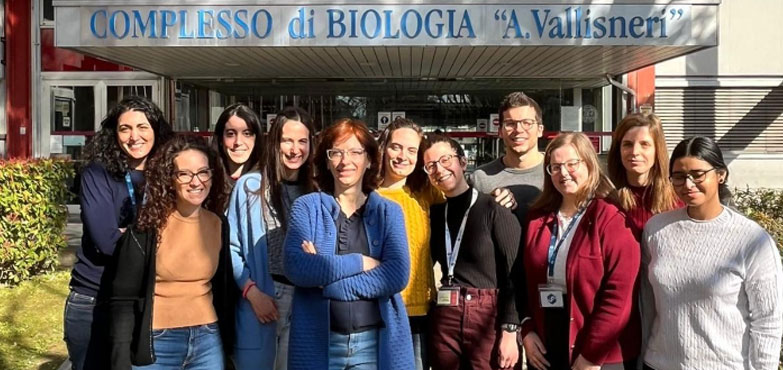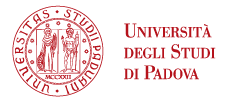
Pathogenesis of neurological and neuromuscular diseases

Cancer and neurodegenerative diseases represent a major health burden for the world. Aging is the major risk factor for these untreatable diseases. Our lab focuses on the understanding of i) What is the relationship between protein context (structure and function) and neurotoxicity/cancer; ii) How specific extra- and intra-cellular signaling pathways directly target the disease-related protein through post-translational modifications that suppress and enhance toxicity; iii) How single-cell molecular identity shapes selective neuronal vulnerability; and iv) What is the role of peripheral tissues in the neurodegenerative process.
With these aims, our research spans several fields of investigation, which are summarized below:
Rare genetic diseases. Disorders of the nervous system caused by polyglutamine proteins. Smith-Magenis syndrome (SMS) is a multisystem condition caused by deletions on chromosome 17p11.2, and mutations in the retinoic acid-induced 1 (RAI1) gene. The underlying mechanism is the haploinsufficiency of RAI1. RAI1 is a dosage-sensitive gene, whose haploinsufficiency is linked to SMS and duplication to Potocki-Lupski Syndrome (PTLS). RAI1 is a polyglutamine- and polyserine-containing transcription co-factor induced by retinoic acid. RAI1 function in physiological conditions and how its haploinsufficiency causes SMS are unknown.
Neurodegenerative diseases. Alzheimer’s disease, Parkinson’s disease, amyotrophic lateral sclerosis (ALS), and polyglutamine (polyQ) diseases (HD, SBMA, SCA, DRPLA), are characterized by selective degeneration of specific neuronal populations in the central nervous system. The basis for selective neuronal vulnerability remains an enigma. PolyQ diseases are a family of nine neurodegenerative diseases, including spinal and bulbar muscular atrophy (SBMA), Huntington’s disease (HD), DRPLA, and six types of spinocerebellar ataxia, caused by expansions of the glutamine-coding CAG repeat in the exonic regions of nine unrelated genes. Most neurodegenerative diseases are sporadic, while a restricted percentage of patients carry mutations in specific genes. Development of genetic in vitro and in vivo models of neurodegenerative diseases allowed to establish that these diseases are caused by toxic gain of function mechanisms in combination with loss of function mechanisms of the causative(s) gene. We have contributed by generating a new mouse model for SBMA (Chivet et al., 2020); we have provided evidence that muscle is a primary site of SBMA, opening new perspectives for novel intervention strategies targeting the muscle, which is a more accessible tissue (Marchioretti et al, 2023); we contributed in dissecting the molecular mechanisms driving toxicity in SBMA (Piol et al., 2023); and have identified coregulators of AR that are key disease modifiers of SBMA, opening new perspectives for therapy development (Prakasam et al., 2023).
In addition, we are taking advantage of the single cell sequencing technology to really tease apart the molecular mechanism underpinning selective vulnerability of motor neurons in neurodegenerative diseases. Not all neurons are equally susceptible to disease. There are neurons that degenerate first, while others stay functional, even at late disease stages. Our work aims at understanding the molecular etiology of this phenomenon.
Cancer. We are interested in elucidating the role of androgen receptor (AR) in urogenital malignancies, namely prostate cancer (PC) and cancers with a sex-bias (renal cell carcinoma). AR belongs to the family of nuclear hormone receptors, which also includes oestrogen, glucocorticoid, progesterone, and mineralocorticoid receptors. In its inactive state, AR resides in the cytosol in association with heat shock proteins (HSPs). Upon binding to its natural ligands, testosterone (T) and the more potent derivative dihydrotestosterone (DHT), AR dissociates from HSPs, dimerizes and translocates to nucleus, where it binds to specific sequences on the DNA known as androgen-responsive elements (ARE). Upon interaction with transcription co-factors (co-activators and co-repressors) and the basal transcription complex machinery, AR regulates the expression of the androgen-responsive genes. In addition, AR undergoes several post-translational modifications (PTMs), such as phosphorylation, methylation, acetylation and ubiquitination. AR is a ubiquitous protein. Partial or complete AR loss-of-function (LOF) mutations lead to different degrees of androgen insensitivity syndrome, whereas gain-of-function (GOF) mutations result in two clinically distinct age-related diseases, prostate cancer (PC) and spinobulbar muscular atrophy (SBMA).
Our approach is to study the relationship between gene/protein structure/function, identify new candidate genes (disease modifiers) and post-translational modifications that suppress toxic gain of function mechanisms, and to use this information for therapy development. We use cutting-edge techniques, including gene manipulation in vitro and in vivo, single-cell sequencing, time-lapse cell imaging for FRET and FRAP, in vivo modeling, genetic manipulation via CRIPSR/Cas9 system, preclinical assessment of disease modifiers (genes and drugs). Our research led to two phase II clinical trials for SBMA.
People
- Maria Pennuto Associate Professor maria.pennuto@unipd.it
- Emanuela Zuccaro Assistant Professor emanuela.zuccaro@unipd.it
- Caterina Marchioretti Post-doc fellow caterina.marchioretti@unipd.it
- Antonella Falconieri Post-Doc fellow antonella.falconieri@unipd.it
- Chiara Boschelle PhD student chiara.boschelle@unipd.it
- Aishwarya Aravamudhan PhD student aishwaryaaravamudhan@gmail.com
- Roberta Andreotti PhD student roberta.andreotti@studenti.unipd.it
- Elisa Bregolin PhD student elisa.bregolin.1@studenti.unipd.it
- Giulia Boarolo PhD student giulia.boarolo@studenti.unipd.it
- Giacomo Bincoletto Research fellow giacomo.bincoletto94@gmail.com
Selected publications (10 from the last 10 years)
- Prakasam R, Bonadiman A, Andreotti R, Zuccaro E, Dalfovo D, Marchioretti C, Tripathy D, Petris G, Anderson EN, Migazzi A, Tosatto L, Cereseto A, Battaglioli E, Sorarù G, Lim WF, Rinaldi C, Sambataro F, Pourshafie N, Grunseich C, Romanel A, Pandey UB, Contestabile A, Ronzitti G, Basso M, Pennuto M*. 2023. LSD1/PRMT6-targeting gene therapy to attenuate androgen receptor toxic gain-of-function ameliorates spinobulbar muscular atrophy phenotypes in flies and mice. Nature Comm 14:303.
- Marchioretti C, Zanetti G, Pirazzini M, Gherardi G, Nogara L, Andreotti R, Martini P, Marcucci L, Canato M, Nath SR, Zuccaro E, Chivet M, Mammucari C, Pacifici M, Raffaello A, Rizzuto R, Mattarei A, Desbats MA, Salviati L, Megighian A, Sorarù G, Pegoraro E, Belluzzi E, Pozzuoli A, Biz C, Ruggieri P, Romualdi C, Lieberman AP, Babu GJ, Sandri M, Blaauw B, Basso M, Pennuto M*. 2023. Defective excitation-contraction coupling and mitochondrial respiration precede mitochondrial Ca2+ accumulation in spinobulbar muscular atrophy skeletal muscle. Nature Comm 14:602.
- Piol D, Tosatto L, Zuccaro E, Anderson EN, Falconieri A, Polanco MJ, Marchioretti C, Lia F, White J, Bregolin E, Minervini G, Parodi S, Salvatella X, Arrigoni G, Ballabio A, La Spada AR, Tosatto SCE, Sambataro F, Medina DL, Pandey UB, Basso M, Pennuto M*. 2023. Antagonistic effect of cyclin-dependent kinases and a calcium-dependent phosphatase on polyglutamine-expanded androgen receptor toxic gain of function. Sci. Adv. 9(1): eade1694.
- Migazzi A#, Scaramuzzino C#, Tripathy D, Hernández IH, Virlogeux A, Zuccato C, Caricasole A, Ratovitski T, Ross CA, Pandey UB, Lucas JJ, Saudou F*, Pennuto M*, Basso M*. 2021. Huntingtin-mediated axonal transport requires arginine methylation by PRMT6. Cell Rep 35:108980.
- Chivet M, Marchioretti C, Pirazzini M, Piol D, Scaramuzzino C, Polanco MJ, Romanello V, Zuccaro E, Parodi S, D'Antonio M, Rinaldi C, Sambataro F, Pegoraro E, Soraru G, Pandey UB, Sandri M, Basso M, Pennuto M*. 2020. Polyglutamine-Expanded Androgen Receptor Alteration of Skeletal Muscle Homeostasis and Myonuclear Aggregation Are Affected by Sex, Age and Muscle Metabolism. Cells 9:325.
- Borgia D, Malena A, Spinazzi M, Andrea Desbats M, Salviati L, Russell AP, Miotto G, Tosatto L, Pegoraro E, Sorarù G, Pennuto M*, Vergani L*. 2017. Increased mitophagy in the skeletal muscle of spinal and bulbar muscular atrophy patients. Hum Mol Genet 26: 1087-103.
- Milioto C, Malena A, Maino E, Polanco MJ, Marchioretti C, Borgia D, Pereira MG, Blaauw B, Lieberman AP, Venturini R, Plebani M, Sambataro F, Vergani L, Pegoraro E, Sorarù G*, Pennuto M*. 2017. Beta-agonist stimulation ameliorates the phenotype of spinal and bulbar muscular atrophy mice and patient-derived myotubes. Sci Rep 7:41046.
- Polanco MJ, Parodi S, Piol D, Stack C, Chivet M, Contestabile A, Miranda HC, Lievens PMJ, Espinoza S, Jochum T, Rocchi A, Grunseich C, Gainetdinov RR, Cato ACB, Lieberman A, La Spada AR, Sambataro F, Fischbeck KH, Gozes I, Pennuto M*. 2016. Adenylyl cyclase activating polypeptide reduces phosphorylation and toxicity of the polyglutamine-expanded androgen receptor in spinobulbar muscular atrophy. Sci Transl Med 8:370ra181.
- Rocchi A, Milioto C, Parodi S, Armirotti A, Borgia D, Pellegrini M, Urciuolo A, Molon S, Morbidoni V, Marabita M, Romanello V, Gatto P, Blaauw B, Bonaldo P, Sambataro F, Robins DM, Lieberman AP, Sorarù G, Vergani L, Sandri M, Pennuto M*. 2016. Glycolytic-to-oxidative fiber-type switch and mTOR signaling activation are early-onset features of SBMA muscle modified by high-fat diet. Acta Neuropathol 132: 127-44.
- Scaramuzzino C, Casci I, Parodi S, Lievens PMJ, Polanco MJ, Milioto C, Chivet M, Monaghan J, Mishra A, Badders N, Aggarwal T, Grunseich C, Sambataro F, Basso M, Fackelmayer FO, Taylor JP, Pandey UB, Pennuto M*. 2015. Protein arginine methyltransferase 6 enhances polyglutamine-expanded androgen receptor function and toxicity in spinal and bulbar muscular atrophy. Neuron 85: 88-100.
Projects
- Fondazione Telethon (Italy)
- AFM Telethon (France)
- ARISLA (Italy)
- Ministry of Health (Italy)
- MUR PRIN (Italy)
- Fondazione AIRC (Italy)
- Fondazione Just Italia
- Kennedy Disease Association (USA)
- Fondazione Veronesi
- Marie Skłodowska-Curie Actions




